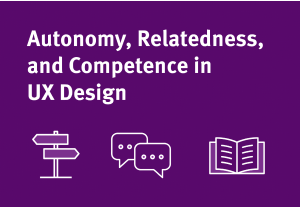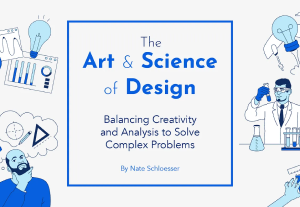- 3D Graphics and Interfaces, Augmented Reality, Design, Gaming, Mobile Applications, Mobile Technology, Personal and Professional Development, Requirements and Specifications, Visual Design
There are many ways for game UX designers to break into this multibillion-dollar industry. Using her 14 years of video game UX expertise, designer Pam Nicholls shares how.
Article by Pam Nicholls
Play Is the Point: How UX Designers Can Break Into the Gaming Industry
- The video game industry is worth billions of dollars, and more game studios are incorporating UX specialists into the development process.
- The role of a UX designer in the gaming industry depends on the platform: console, mobile, or PC.
- UX designers can bring value to the development process by introducing players to the game, promoting inclusive design, and balancing game monetization and UX.
Share:Play Is the Point: How UX Designers Can Break Into the Gaming Industry
Share this link
- April 13, 2023
11 min read

- Behavioral Science, Conversational Design, Customer Experience, Design, Design Theory, Human factors, Product design
Addressing these 3 fundamental psychological needs in our products increases user motivation and well-being. Users will be more engaged and more likely to use our designs.
Article by Tanner Kohler
Autonomy, Relatedness, and Competence in UX Design
- The self-determination theory explains how three basic psychological needs — autonomy, relatedness, and competence — drive human motivation:
- Autonomy: Users value products they can customize to their needs and preferences.
- Relatedness: Products that relate to users’ needs and perspectives strengthen relationships and increase satisfaction.
- Competence: Clear and compelling design helps users become competent using the system, leading to positive outcomes.
- When it’s challenging to accommodate autonomy, relatedness, and competence in a single design, testing with potential users can help determine which need is the most important.
Share:Autonomy, Relatedness, and Competence in UX Design
Share this link
- April 11, 2023
11 min read

- Behavioral Science, Design, Design Theory, Human factors, Visual Design
Discover how to create a user-centered experience by designing for the Locus of Attention.
Article by Vero Vanden Abeele
Why Skilled UX Designers Are (Like) Magicians
- The article is built around the term “locus of attention”, which refers to the focus of attention, including not only the actively chosen object but also anything that grabs one’s attention, including cases where selective attention wanders off.
- The manipulation of users’ attention is essential in UX design, as the locus of attention determines what will be noticed and what will be ignored.
- A skilled UX designer should know how to grab, hold and relocate the locus of attention.
Share:Why Skilled UX Designers Are (Like) Magicians
Share this link
- April 6, 2023
14 min read

- Conversational Design, Design, Interaction Design, Mobile Applications, Product design, Product Releases and Redesigns, Usability
Article by Peter Ramsey
Copying Designs Doesn’t Work, And Here’s Why
- The author speculates on the right balance between drawing inspiration from existing designs and creating original work and provides some do’s and don’ts of implementing inspiration.
- Copying another’s design may result in losing the key elements that make it work, making it difficult to replicate the original experience.
- Designers can use inspiration as a starting point rather than a destination to fuel creativity.
Share:Copying Designs Doesn’t Work, And Here’s Why
Share this link
- April 4, 2023
6 min read

- Conversational Design, Design, Design Theory, UX Education
Balancing Creativity and Analysis to Solve Complex Problems.
Article by Nate Schloesser
The Art & Science of Design
- The article explores the balance between subjective creativity and objective analysis in design.
- From the author’s perspective, designerʼs priorities should include:
- Experimenting with new ideas;
- Remaining receptive to feedback;
- Relying on data analysis to refine and enhance their designs;
- Generating solutions that positively impact society’s accessibility, sustainability, and social justice.
Share:The Art & Science of Design
Share this link
- March 30, 2023
12 min read

- Artificial Intelligence, Defining AI, Google
Breaking down the strengths and limitations of search engines and GPT-3 language models.
Article by Aydin Ozcekic
Merging Search and GPT3
- The author analyzes advancements in technology that have integrated search capabilities into chatbots for a more efficient user experience.
- Comparing search and GPT3, it’s crucial to choose the technology that best fits the specific needs and goals of the user:
- GPT-3 language model is content-centered, ideal for text-based information manipulation;
- Search engines are best for point-to-point information retrieval.
- The combination of chatbots and search engines can potentially cannibalize each other, leading to a double-edged sword scenario.
Share:Merging Search and GPT3
Share this link
- March 28, 2023
5 min read


